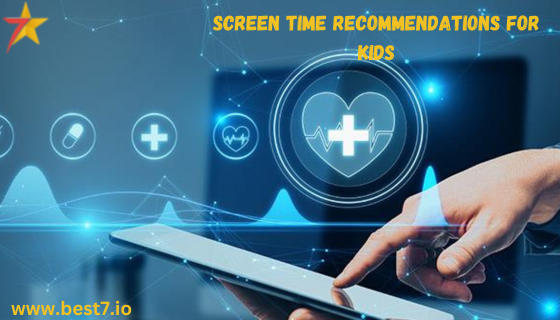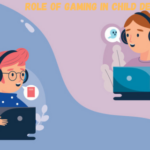
The discussions around screen time and how it affects children have been at high levels in recent years. Screen time guidelines have been developed in response to the endless arguments between parents, educators and health professionals about how much is too much for children. When it comes to promoting healthy behavior and optimal child development, the ability to better manage digital usage is highly important.
Understanding Screen Time
Screen time is the amount of time children spend interacting with screens, from TVs and computers—including laptops, tablets, smartphones to video games systems. The manner in which technology has since penetrated our lives on a daily level makes it such that kids interact with the world very differently. Although there are some educational and entertainment benefits to digital devices, spending too much time in front of screens can negatively influence a child’s health and development.
1. The Digital Landscape
The digital environment also shifted quickly, and children are introduced to screens from infancy. Since a lot of our children use tech to learn, connect and have fun; how do we master the balance between in-real-life (IRL) and digital worlds?
2. Impact On Child Development.
Screen time on child development Studies have also demonstrated that having too much screen time can contribute to a plethora of issues including damage to social competence, reducing physical activity and sleep disturbances. Therefore putting in place some screen time rules is essential.
Tips On Screen Time For Kids
The American Academy of Pediatrics, along with several other entities, has issued guidelines for parents to help supervise their children’s use of screens. The purpose of these guidelines is to ensure the safe, balanced use of digital media for health and development.
1. Age-Adjusted Recommendations
The guidelines for recommended screen time vary depending on the child’s age. For example:
– Children under 18 months: It is recommended to limit the screen time to video chats only. Starting screen time at this age may prevent children from obtaining enough time to develop their language and other social skills.
– Children from 18 to 24 months: Parents should start allowing high-quality programs with a learning impact but watch the content with children to help understand what they see.
– Children from 2 to 5 years: No more than one hour per day of high-quality screenings is allowed. Discussion about what children see after becomes an essential part of their process and helps apply knowledge.
– Children of 6 years and older: establishing consistent limits concerning the total amount of hours and incorporating off-screen hours not interfering with healthy sleep and physical activity.
2. Eventful Over Volume
The same amounts of screen time do not have the same values. Parents complementing children’s learning and adventures are recommended over passive watching or playing. Thus, parents explain everything their child reads or plays and are recommended to use programs and apps that enhance creativity and logic.
3. Physical Activity
Parents should also promote physical activity as a part of their children’s daily routines, compensated for by screen time. Children can play outside once the screen time is over or engage in sports.
4. Screen Time Limits App
Setting strict screen limits is a must. Parents can put daily limits according to the age of a child and his or her necessities. These restrictions facilitate keeping your screen time exciting i.e. a learning place rather than distress.
5. Bones 7 Months + Creating A Family Media Plan
A family media plan can be a way to help keep these guidelines in place. Screen limits and rules as to where and when screens can be used, what content is okay, and how much screen time meshes with other activities may also work. Including children in this plan will help them feel as though they have some stake in the game.
6. Tech-Free Zones
Creating tech-free zones within the household can keep the family connected and off their screens. Screen-free zones, such as the family dining room or bedrooms, make it easier for members of the household to communicate in person and connect with each other.
Healthy Habits With Screen Time
Establishing healthy screen time routines is needed to support a comprehensive technology consumption plan. These can actually impact so many parts of a child’s life as a whole, for the better.
1. Encouraging Breaks
Taking breaks often during below mentioned activities are essential in keeping your eyes working without a strain and help focus: Parents can help by having kids take breaks every 20-30 minutes to stretch, move or do something else. These breaks are essential to help them recharge their minds and body.
2. Setting Healthy Technology Use Examples
Let us turn to be the parents through whom children learn good tech habits. Balanced screen time habits are also a habit, so practice that to set norms for children as well. Parents can tell kids how they manage their own screen time and when other things, like reading, outdoor play or family interactions — are higher priorities.
3. Creating a social environment
Using technology to engage in interactive applications can add value to screen time as a parent. Kids would get in touch with friends and family through video calls or collaborative games. Parents can help build this community and connection.
How Screen Time Affects Kids?
Screen times on children have been widely researched and studies range from positive to negative. Familiarity with these impacts can aid parents in making well-reasoned choices while regulating screen time.
1. Positive Effects
High-quality content can provide educational value for screen time. Schools are places where your child will learn cognitive, problem-solving and creative skills through educational games and programs. Furthermore, technology also provides a convenient form of supplement to the method of intercommunication and companionship especially in today’s world where everything is interconnected with one another.
2. Negative Effects
Now, too much screen time does have a lot of negative consequences based on the research end; Research has indicated that increased screen time may lead to less physical activity and potentially obesity. This can even cause problems like sleep disorder, loss of focus and social withdrawal. Knowing these risks is why screen time management is so important.
3. Mitigating The Effects Of Screen Time
Parents can talk to their children about screen time and focus on the content that they are viewing. Talking about online safety, digital citizenship, and responsible internet use allows children to take the reins when it comes to their technology use.
The proper implementation of parenting skills can help ensure that children have a positive relationship with their technical environment. These strategies can help encourage positive digital habits and be more supportive to child development.
4. Screen Time Together
Screen time can also be an excellent time to co-view or play along with kids. This can prompt a dialogue about the material and challenge them to think for themselves when faced with what they see. It helps them to engage in better communication and build solid parent-child connections.
5. Resources for Learning / Education
Another thing that the parents can do is use several educational resources available online. Most of the best kids learning platforms out there offer fun, interactive games as well as quality lessons and content for various age groups. Parents can also help steer children to educational materials that they would find helpful so that some of this screen time is taken up with useful learning.
6. Fostering Creativity and Hobbies
It is therefore very important to get children interested in creative hobbies beyond screens for a more holistic growth. Drawing, writing, playing musical instruments and sports are all vital experiences that can add to a child’s life. Parents can encourage these interests and also make certain that screen time is not trumping creative explorations.
Digital Wellness for Kids
For Kids — The concept of digital wellness is the idea that you can encourage healthy screen time with your children. This involves a multitude of tactics and habits that they practise to keep healthy in the digital age.
1. Digital Citizenship Curriculum
The teaching of digital citizenship empowers children with the awareness and capabilities to navigate around it safely and responsibly. For parents, they can talk about online safety messages including privacy and being respectful. Parents are creating a healthy relationship between the technology medium through intrinsic values.
2. Monitoring Tech Usage
It also helps parents to keep a check over the use of technology by their children and allows them to know what is it that they are doing online. This feature helps in highlighting any potential risks and making sure that the children consume everything appropriate. And, if you want to enforce some boundaries and monitor screen time, then there are tools that parents have access to for doing just that.
3. Fostering Well-Informed Dialogues
Talk openly — discuss technology, and do not shy away from the subject or screen time, encourage children to talk about their experiences. Carving out time and space for children to share how screens are being used and some of the struggles they might be facing may be a way of offering greater protections against screen addiction. This kind of conversation builds trust and allows for good communication.
How To Make Your Time Spent On Screen Work For You Instead Of Against You?
Parents, in order to maximise benefits of screen time for your kids’ development aims can also support the following balanced approach to learning and well-being.
1. Tying Learning With Screen Time
For any screen time they do have, parents can focus on educational content. If children can engage with programs that teach and promote learning and critical thinking, screen time can encourage development.
2. Leveraging Family Engagement Benefits
Screen time is something families can do together, and participation in those activities increases family connections. Parents can also schedule a family game night or movie evening where they will be involved together. These initiatives create a bond and union among them.
3. Adaptable within Each Student
Every child is different and every child may need a different amount of screen time. Parents need to find a good mix of all of the above, and it changes depending on your child’s age, interests, and personality. Taking this into account, it is possible that parents may have more success at managing screen time if they can respect the fact that individuals prefer engagement in different ways.
In conclusion, limiting the time children spend in front of screens is key for ensuring good physical health and development. By following clear rules and principles, parents can maintain a healthy balance when it comes to digital use.
Highlighting quality content, facilitating open discussion and cultivating positive environments will help families to safely navigate the digital world based on promoting their well-being. This supports the development and growth of children in the modern era by giving them a healthy relationship with technology.












